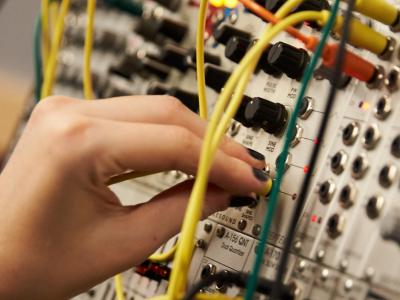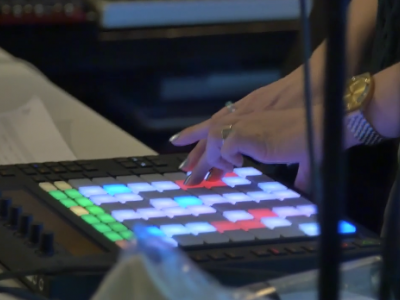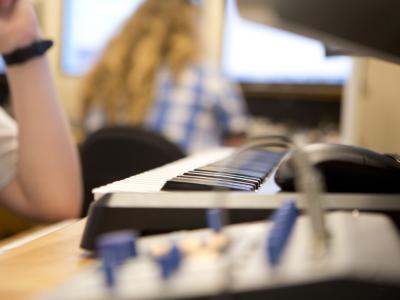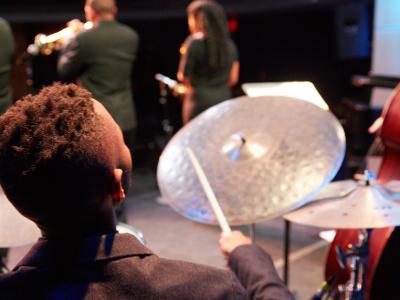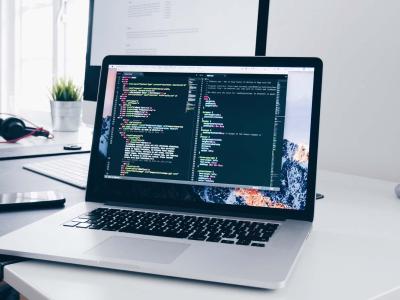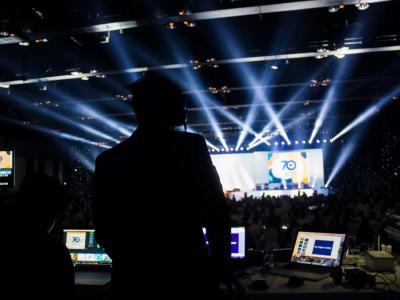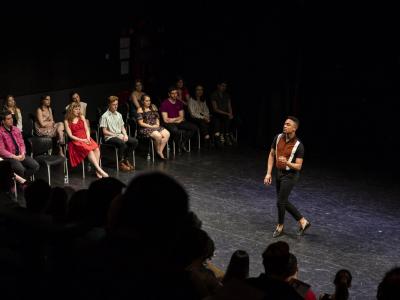What does a Live Experience Designer do?
Visual design elements like lighting, sets, props, costumes, projections, and pyrotechnics have long been used to enhance live musical performances for audiences—creating a sense of theatricality, narrative, and emotional continuity. It's only recently, however, that successful musicians and artists have begun to hire qualified professionals to take full control of their show or tour's artistic direction: live experience designers. These industry veterans provide a unifying vision for a show or tour's design, ensuring that every part works in tandem to express an overarching narrative, deconstruct the artist's message, or create a unique and compelling visual experience.
The best live experience designers quickly grasp the artist's goals and use inventive methods to achieve them.
Live experience designers usually begin projects by meeting with the artist in question and discussing concepts for the show or tour's narrative and setting, using the artist's lyrics, music, and ideas as a basis. They might also discuss critical details like the venue, set list, and number of performers. Depending on the project's budget and needs, the live experience designer might work alone to design essentials like backgrounds, lighting, and costumes, or oversee a team of specialists as they create and refine concept designs. If overseeing a team, the live experience designer might provide them with as little as a single phrase—like "circus," "prison," or "underwater"—or as much as an entire style manifesto, complete with reference images and a color palette. Once the artist has approved the finalized designs, the live experience designer oversees the construction process to ensure that it stays on schedule and that the artist's needs are met.
At a Glance
Live experience designers are veteran production designers who come from a variety of backgrounds including live music, dance, and theater. The most common path is to start by building a strong reputation as a lighting designer, costume designer, and/or set designer before transitioning into holistic concert design—a field which requires knowledge of and experience in all of the aforementioned disciplines and more.
Live experience designers who specialize in lower-budget tours, festivals, DJ sets, and nightclub environments might take an alternative path, beginning as video artists and providing backgrounds, projections, and video collages for live shows. Regardless of their professional background, live experience designers can gradually advance their careers by finding work with more prestigious artists on higher budget concerts and tours. The most successful live experience designers might work on renowned events like the Grammys or the Olympics opening ceremony.
While the most successful live experience designers are freelancers, the majority work for small tour and concert production companies, which they may found and run themselves. In this industry, most jobs are found through word of mouth, so aspiring live experience designers are advised to network as much as possible with recording artists, artist managers, label representatives, talent buyers, and concert promoters, as well as the community of theatrical designers with whom they work closely.
- Broad experience with stagecraft and technical production design
- Lighting design
- Costume design
- Set design
- Projection and video design
- Theatrical production
- Live camera operation and placement
- Communication
- Collaboration
- Leadership
- Time management
Live experience designers are creative, detail-oriented professionals who enjoy nothing more than creating designs to serve a larger event or performance. Communication and collaboration skills are key for their work, but perhaps even more important is the quality of adaptability: some jobs require minimal, easily transportable designs, while others call for elaborate, flashy work. The best live experience designers quickly grasp their clients' goals and use inventive methods to achieve them.
While a beginning live experience designer might travel with an artist on tour to operate projections or help install the lighting plot they designed, experienced live show designers generally leave the hands-on stuff to technical crews or employees, instead focusing on design work. As a result, freelance live experience designers have flexibility when it comes to hours and workplace. Those who belong to concert or tour production companies usually work with a consistent team from an office or studio, and may have set work hours.

